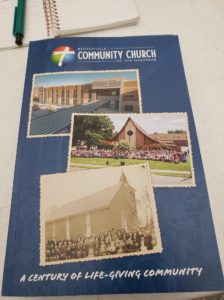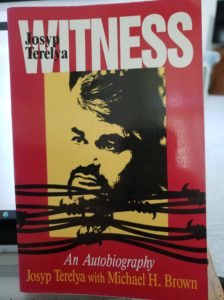Here it is, Monday morning, 7:42 a.m. at the new Central Daylight Time, and I’m just getting around to writing my blog post. I didn’t get up until 7:02 a.m. today. I guess I was tired.
I taught adult Sunday school yesterday. That usually takes a lot out of me, both the preparation work and the teaching. I was exhausted as I made my way from the classroom to the sanctuary, and then as I sat through the church service.
When we got home, I ate our Subway lunch then put a roast on for supper. And off to the sunroom I went for my normal reading and nap time. I don’t always nap during these sessions, but I did yesterday. I like to take a walk then, but I was much too tired to do so. I went to my reading chair in the living room, where Lynda had a UFO program on. Just the thing to have in the background when you’re too tired to do much. I decided to forego my afternoon walk.
The next couple of hours are a blur. I caught up on e-mails. At 3:45 p.m. I added the veggies to the roast. I sent an e-mail to our Life Group with the prayer requests from the morning and the scripture we studied. I really can’t remember what else took up those couple of hours. But I did learn that I had left the charging cord to my computer in the Sunday school classroom. Alas, I won’t be going anywhere near the church this week. Well, I have a second cord I keep in The Dungeon, and fetched it. I can carry it up and down the stairs this week.
When the roast was done a little after 6:00 p.m., we ate, putting on a Miss Marple TV show, one of the ones from the 1980s in which Joan Hickson plays Miss Marple. When that was over, I pulled up on my computer the Bible study I’m writing, the one that my co-teacher and I are also teaching. I started writing on that around 8:30 p.m. or so, and when I stopped at 9:50 p.m., I discovered I had added 1,800 words, and was a little ahead of schedule on where I hope to be at that point in the week.
After that writing session was reading, putting pills together for this week, cleaning a bit in the kitchen, and to bed around 11:00 p.m., my usual time. I slept okay. Up several times in the night, but was able to get back to sleep each time. I woke this morning around 6:10 a.m., and rather than get up I decided to stay in bed until my normal 6:30 a.m. rising time. The next thing I knew it was 7:02 a.m. I never sleep that late.
But, of course, we changed this weekend to Daylight Saving Time. I lost an hour of sleep. It’s no wonder I was tired. It’s going to take a couple of days to fully adjust. And Saturday, I spent a fair amount of time pulling together our partnership income tax form. We trade stocks as a partnership, and that tax return is due March 15. That actually came together pretty well. I was able to complete and print the forms on Saturday. Today I will proof them and, assuming they are correct, make my copy and take them to mail today, two days early.
I also did some writing on Saturday, in the evening, on the Bible study as I prepared the lesson for yesterday. In that session I produced around 1,200 words. I think they were good words, but I’ll know more when I re-read them today at the beginning of my writing session.
So maybe I earned that tiredness. My blood sugar readings were good, as were my blood pressure. My weight is up a little as I’ve lost motivation to eat properly. I hope to get that motivation back today.
I think also the weight of everything I have to do this week was pressing on me. Tomorrow I make a presentation to the Northwest Arkansas Letter Writers Society (one of my clubs) on Historical Letter Collections, and I’m not ready yet. With banks failing this weekend, I know stock trading today will be intense. Wednesday are our annual eye exams. Thursday is Scribblers & Scribes writing critique group, and I have to decide what to prepare.
Oh, and this morning, I discovered that I also forgot my wireless mouse at church. It’s very hard to do my stock trading without that, and of course it’s important to overall computer use, so I guess I’ll make the 13 mile drive to church this afternoon and retrieve the forgotten items.
Obviously, I was tired.









